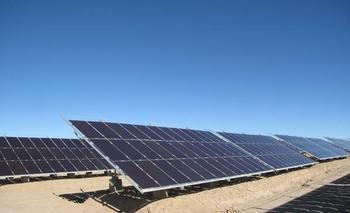 "China's Photovoltaic Classification of On-grid Tariff Policy Research Report" was officially released
"China's Photovoltaic Classification of On-grid Tariff Policy Research Report" was officially released The turning point of the photovoltaic industry has come?
"The 7th International Solar Energy Industry and Photovoltaic Engineering (Shanghai) Exhibition & Forum" was held in Shanghai as scheduled. On the same day, the Energy Foundation strongly supported the “China's Photovoltaic Classification of On-grid Tariff Policy Research Report†presided over by the China Resources Comprehensive Utilization Association’s Renewable Energy Professional Committee (CREIA).
According to reports, the “Classification Electricity Price Report†divides China (excluding Hong Kong, Macao, and Taiwan) into four types of resource areas based on the total annual solar radiation level in China. According to the investment cost and the payback period, they are set differently. Regional photovoltaic benchmarking on-grid tariffs; based on the consideration of encouraging development and fair income, proposed different distributed electricity prices.
At present, as photovoltaic power generation does not yet have market competition advantages in terms of cost, the stimulatory effect of fixed on-grid tariffs is most obvious. This is evident from the implementation effect of the fixed price policy announced by the National Development and Reform Commission in July 2011. However, China's fixed on-grid tariffs implement unified national feed-in tariffs in addition to the Tibet Autonomous Region. This has significantly different incentives for regions with different regional resource endowments.
It is reported that the installed capacity of photovoltaic "Twelfth Five-Year Plan" in China will be adjusted from 21GW to 35GW. Once this adjustment is confirmed, it means that PV industry needs to maintain an average installation volume of about 10GW per year in the next few years, relying only on existing support policies. It is difficult to accomplish the set goals. Judging from international experience, a reasonable electricity pricing policy can have a multiplier effect on the development of the photovoltaic industry. Establishing a reasonable and effective electricity price mechanism can not only promote the development of the industry, but also effectively reduce the government subsidy expenditure and make the government to renewable energy. The subsidy benefits are maximized, so pricing must be differentiated according to resource differences and development models.
According to the “Classification Electricity Price Reportâ€, the annual equivalent utilization hours are respectively one type of resource area greater than 1600 hours, the second type resource area is between 1400 hours and 1600 hours, and the three types of resource area are between 1200 hours and 1400 hours. The fourth type of resource area is less than 1200 hours. According to the resource status and the cost of power generation, the on-grid tariffs for photovoltaic benchmarks applicable to each region are calculated, which are 0.8 yuan/kWh for a type of resource zone, 0.9 yuan/kWh for a category II resource zone, 1.0 yuan/kWh for a category III resource zone, and four types of resources. District 1.1 yuan/kWh. For special areas such as the Tibet Autonomous Region and Sichuan Abba Autonomous Prefecture, where the natural conditions are relatively poor, the benchmark on-grid tariff should be raised to 1.15 yuan/kWh.
Yuchai 0-20KW Diesel Generator
Yuchai 0-20Kw Diesel Generator,Yuchai Soundproof Power Generator,Yuchai Canopy Power Generator,Yuchai Mobile Power Generator
Shanghai Kosta Electric Co., Ltd. , https://www.generatorksd.com